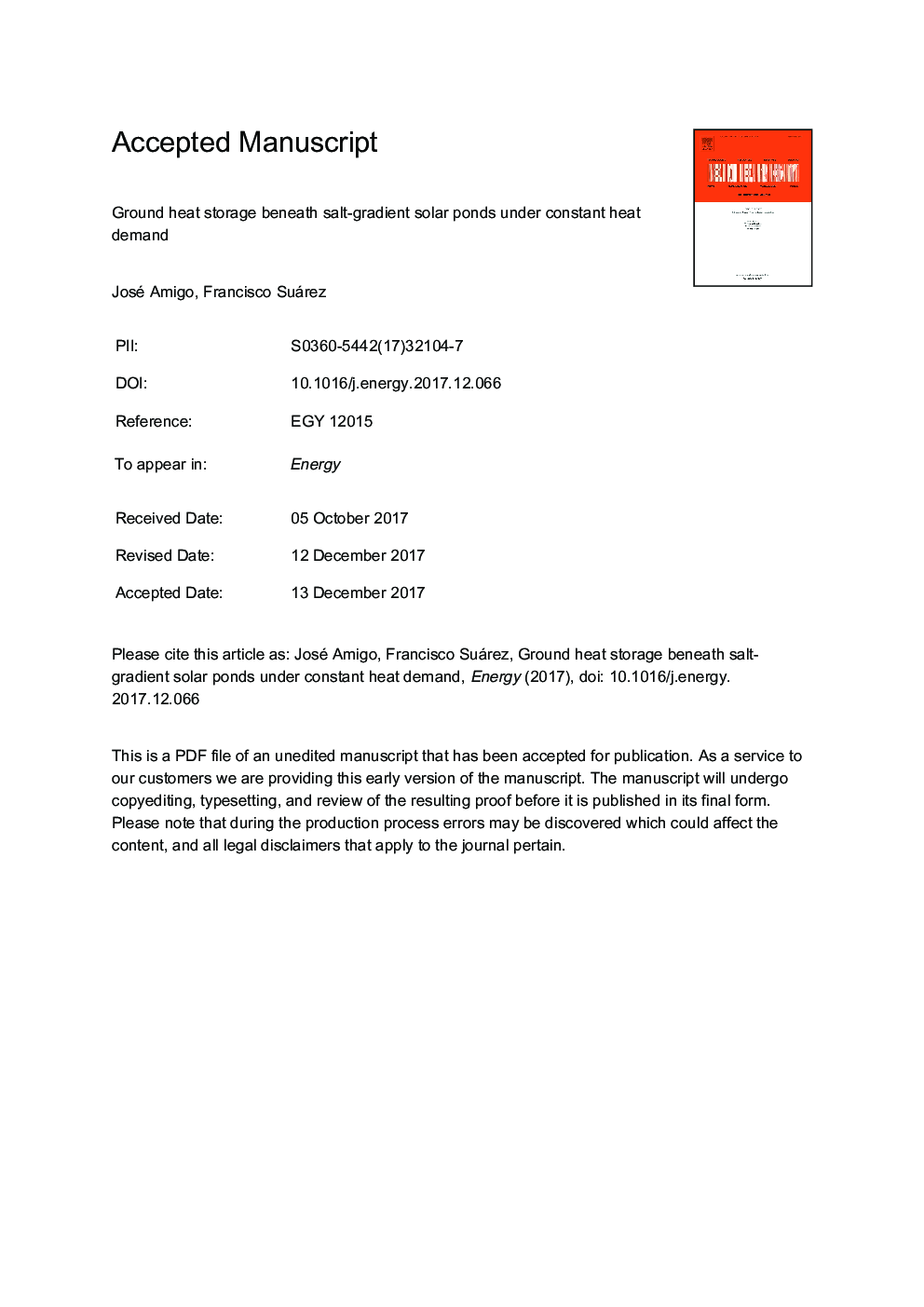| کد مقاله | کد نشریه | سال انتشار | مقاله انگلیسی | نسخه تمام متن |
|---|---|---|---|---|
| 8072358 | 1521406 | 2018 | 41 صفحه PDF | دانلود رایگان |
عنوان انگلیسی مقاله ISI
Ground heat storage beneath salt-gradient solar ponds under constant heat demand
ترجمه فارسی عنوان
ذخیره گرمای زمینی در زیر نماتدهای خورشیدی گرمایشی که تحت تقاضای حرارت ثابت هستند
دانلود مقاله + سفارش ترجمه
دانلود مقاله ISI انگلیسی
رایگان برای ایرانیان
کلمات کلیدی
آبشار خورشیدی، استخراج حرارت، انرژی خورشیدی، ذخیره سازی زمین گرمایی
ترجمه چکیده
استخر های خورشیدی گرادیان خورشیدی، جمع آوری انرژی و سیستم های ذخیره سازی هستند که تامین حرارت مستمر را ارائه می دهند. اگرچه مطالعات بسیاری در مورد رفتار حرارتی حوضچه های خورشیدی مورد بررسی قرار گرفته اند، اما تحقیقات چندانی در مورد چگونگی بازیافت گرما به زمین در زیر حوضه بررسی شده است. در اینجا، یک مدل گذرا یک بعدی برای مطالعه تعامل حرارتی بین یک آبشار خورشیدی با تقاضای حرارت ثابت و زمین زیر آن مورد استفاده قرار می گیرد. خواص حرارتی زمین به دما و رطوبت بستگی داشت. همان طور که عمق آب زیرزمینی بر روی توزیع رطوبت خاک تاثیر می گذارد، زمانی که سطح آب های زیرزمینی کم عمق است، هدایت حرارتی بالاتر مشاهده می شود. علاوه بر این، میانگین دما در پایین آبشار به صورت عمودی کاهش می یابد، زیرا عمق آب زیرزمینی کم است. برای جداول زیرزمینی عمیق، تغییرات حاشیه ای در عمق جدول زیر زمین تاثیر قابل توجهی بر دمای پایین آب بند ندارد. اضافه کردن یک لایه عایق تنها زمانی مفید است که سطح آب کم عمق باشد. وقتی که سطح آب عمیق است، زمین زیر آب زیرزمینی به عنوان یک حجم ذخیره سازی اضافی عمل می کند و اجازه می دهد دمای پایدار در حوضه در طول سال، و آن را مناسب تر برای تقاضای حرارت ثابت است.
موضوعات مرتبط
مهندسی و علوم پایه
مهندسی انرژی
انرژی (عمومی)
چکیده انگلیسی
Salt-gradient solar ponds are energy collectors and storage systems that provide continuous heat supply. Although many studies have investigated the thermal behavior of solar ponds, few researches have investigated how heat lost to the ground beneath a pond can be recovered. Here, a one-dimensional transient model is used to study the thermal interaction between a solar pond with constant heat demand and the ground beneath it. The ground thermal properties were dependent on temperature and moisture. As groundwater depth affects soil moisture distribution, higher thermal conductivities are observed when the groundwater table is shallow. Further, the mean temperatures at the bottom of the pond decrease exponentially as the groundwater depth is shallower. For deep groundwater tables, marginal variations in the groundwater table depth do not have a considerable impact on the pond's bottom temperatures. The addition of an insulation layer is only beneficial when the water table is shallow. When the water table is deep instead, the ground below the pond acts as an additional heat storage volume, permitting more stable temperatures in the pond throughout the year, making it more suitable for a constant heat demand.
ناشر
Database: Elsevier - ScienceDirect (ساینس دایرکت)
Journal: Energy - Volume 144, 1 February 2018, Pages 657-668
Journal: Energy - Volume 144, 1 February 2018, Pages 657-668
نویسندگان
José Amigo, Francisco Suárez,
